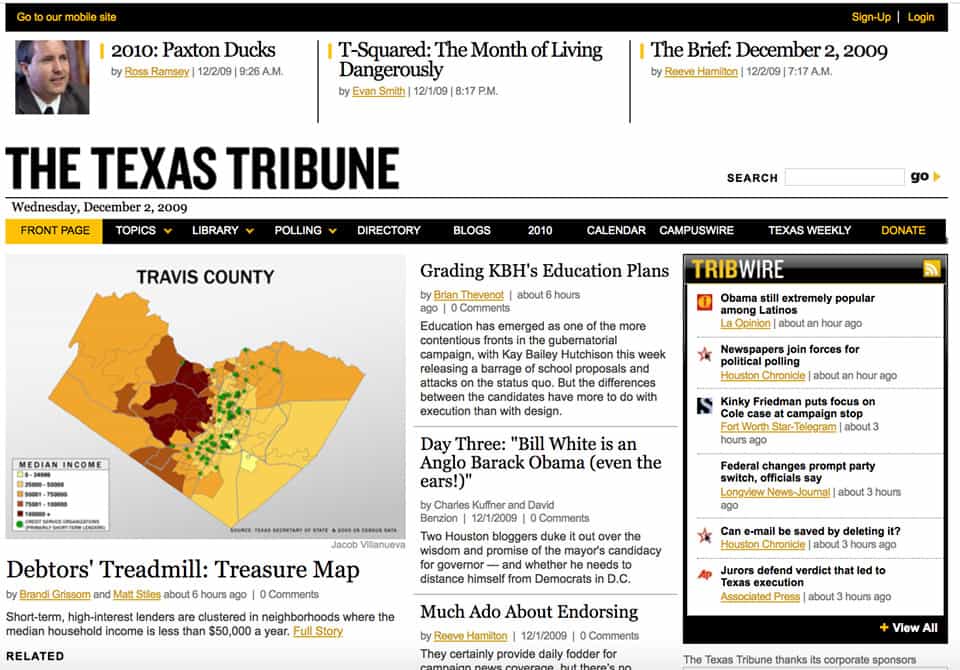Traditionally, the idea of charging money (for almost anything) at a nonprofit has been a point of contention. In addition to serving communities and fighting for important causes, this is one of the core elements differentiating for-profits and nonprofits. Nonprofit = not in the pursuit of revenue.
If you’re in the nonprofit world today, you know this is changing, and that the term “earned revenue” is picking up steam in the NGO world. As today’s consumers and donors are evolving, so must nonprofits.
The time has come for CFO’s and Development Directors to search for ways to generate sustainable, dependable revenue and go beyond large galas and year-end fundraising pushes. Today I’m going to dive into some of my favorite earned revenue strategies and initiatives!
1: College Forward

College Forward is an Austin-based nonprofit that coaches underserved, motivated students to achieve the benefits of higher education and a college degree. They do this not only through programs but through their own technology platform, CoPilot.
This technology platform is a cloud-based student information system built on the Salesforce.com platform, which they sell to partner organizations. From academic info, financial aid, and crucial student data, this earned revenue initiative brings cutting-edge technology to schools and organizations focused on helping kids get into and succeed in college.
The Copilot Program now has over 40 partners (or customers) who’ve purchased the product and helped over 300,000 kids.
The Copilot Program is an excellent example of taking something you already use, realizing it’s worth, and selling it spread impact bring wealth back into your organization.
2: Old Skool Cafe

The Old Skool Cafe is a nonprofit based out of San Francisco, CA founded with the goal of serving at-risk youth. On the front end, it an upscale comfort food restaurant with live entertainment, but on the back-end, it is much more. Behind the scenes, youth in the community are getting industry training and real work experience at Old Skool Cafe.
The nonprofit teaches and trainings kids and young adults from the ages of 16-22 to run all forms of the restaurant business, from hosting, to serving, cooking, and even performing. In addition to support from donors and community partners, the money generated from the restaurant venue is a substantial revenue stream for the nonprofit.
To me, what is so incredible about this earned revenue initiative is how intertwined it is with the work. Old Skool’s earned revenue initiative ties the business and mission together so tightly, that arguable one wouldn’t exist without the other!
3: Emancipet

Emancipet is a nonprofit working to provide veterarain care to all dog owners in Houston, Austin, Philadelphia and more. Their self-supporting earned revenue stream comes from their discounted spay and neuter services.
According to their website, Emanicapet generates more than $12 million a year—which gives them enough money to offer free spay and neuter services to 60 percent of clients. This revenue structure has enabled them to spay or neuter over 350,000 dogs and cars since their formation since 1999.
The thing that stands out to me about this structure is leadership’s acknowledgment and faith in their expertise. An earned revenue model like this enables you to charge those who can afford their services while providing it free to those who can’t.
4: Welcoming America

With locations nationwide, Welcoming America’s Business Line is one of the most diverse revenue streams I’ve seen yet. As an organization, Welcoming America is on a mission is to lead a movement of inclusion in communities and foster the belief that all people, including immigrants, are vital to society’s success.
This mission lead them to establish a huge network of partners in over 500 communities, and their earned revenue models simply leverages access to this network. They’ve got several sources of revenue, including direct mail marketing, sponsored content, customized trainings, sponsor certifications, and access to their business council. All of these simply enable businesses to connect and engage in immigrant inclusion.
What I find so great their approach, is their replication of a classic for-profit sector strategy, leveraging your connections to bring in income. This practice is commonly see if people selling access to their database through targeted emails or sponsored content,
Welcoming America knows their strength is connecting people of all backgrounds, and now they’re helping businesses bridge that gap (for a fee). What is your nonprofit’s strength that businesses might pay for?
5: Texas Tribune

Texas Tribune is a nonprofit media outlet in Texas focused on engaging Texans on public policy, government, and state-wide issues. While they are largely supported by donors and corporate sponsors, they’ve established several other revenue streams to support the expansion of their media outlets.
Similar to some of the other revenue streams we’ve discussed above, Texas Tribune charges for their expertise in political reporting, through a subscription by to their newsletter. But they’ve also branched out beyond this by creating and renting out their space for events and creating their own festival.
Texas Tribune is a great example of an NGO expanding and growing with today’s culture. To ensure success, media outlets now have to go far beyond just newspapers and online journals in order to truly engage with their members. How could you actively engage your donors or supporters further and make a profit from it?
If you’re a nonprofit leader building a scalable, earned revenue stream is something to look into. This can provide stability and freedom to expand your nonprofit.





